The role of nursing in enhanced recovery after surgery programs in accordance with spine surgery:A mini review
Qing-Qing HOU, Xue LUO, Hong-Mian LI,Ying HOU, Zhi ZHANG
1Department of Spine Surgery, The Fifth Affiliated Hospital of Guangxi Medical University, Nanning, China; 2Department of Cosmetic Surgery, The Fifth Affiliated Hospital of Guangxi Medical University, Nanning, China; 3Department of Hepatobiliary Surgery, The Fifth Affiliated Hospital of Guangxi Medical University, Nanning, China
ABSTRACT
Spine surgery is typically having a relationship to high degrees of pain and immobility.It is a known fact that the implementation of an enhanced recovery after surgery (ERAS) approach has led to a paradigm shift in various surgical specialties.These protocols require doctors, nurses,anesthesiologists, patients, and their families to agree to strengthen communication with each other, and involve a long timeline and teamwork from start to finish.To our knowledge, the role of nursing in the ERAS of spine surgery has not been reported before.The purpose of this study is to summarize the role of nursing in ERAS programs in accordance with surgical periods.The methods applied for this review include literature review of the world’s acknowledged databases such as Springer Link, PubMed, Embase, and Wanfang, especially in the period of 2000-2015.A total of 9 studies fulfilled the eligibility criteria and were included in the review.The findings confirm that the nursing work continued throughout the perioperative procedure, which plays a key role in the successful ERAS pathway.According to different nursing measures, ERAS nursing can effectively promote the postoperative recovery of spine surgical patients, with fewer postoperative complications and increased patient satisfaction.
Keywords:Enhanced recovery after surgery, enhanced recovery after surgery nursing, review, spinal operation
INTRODUCTION
In the year 2001, Professor Henrik Kehlet, a pioneer of fast-track surgery, was essentially responsible for the beginning, development, and implementation of the enhanced recovery after surgery (ERAS) programs in the Hospital Universitario Rigshospi-talet of Copenhagen (Denmark).[1,2]The ERAS protocol (also called fast-track, accelerated, or rapid recovery surgery) clinical pathway is a multimodal approach to patient care introduced, which uses a series of optimization measures with evidence-based medical research evidence for perioperative management to reduce the physical and psychological traumatic stress of surgical patients,improve patient outcomes, and enable patients to recover faster [Figure 1].[3-5]A growing body of evidence suggests that ERAS protocol has been successfully implemented and managed in patients with various surgically treated diseases, such as hepatocellular carcinoma, breast cancer,gastric cancer, musculoskeletal surgery, and cholecystectomy,especially following colorectal surgery.[6-8]In recent years,there is strong evidence to demonstrate that ERAS has been successfully adopted into major spinal surgery pathways.[9]Epstein[10]included citing protocols for the early mobilization of hospitalized patients undergoing spinal surgery, such as day of surgery, first postoperative day, reduced perioperative comorbidities, and length of stay.The clinical details provided by Mathiesenet al.[11]in their comparative study of introducing multilevel (median 10) instrumented spinal fusions treatment protocol to 44 consecutive patients undergoing major spinal surgery, it was demonstrated that compared to a historic group, treatment protocol significantly improved postoperative mobilization, accompanied by low intensities of nausea.
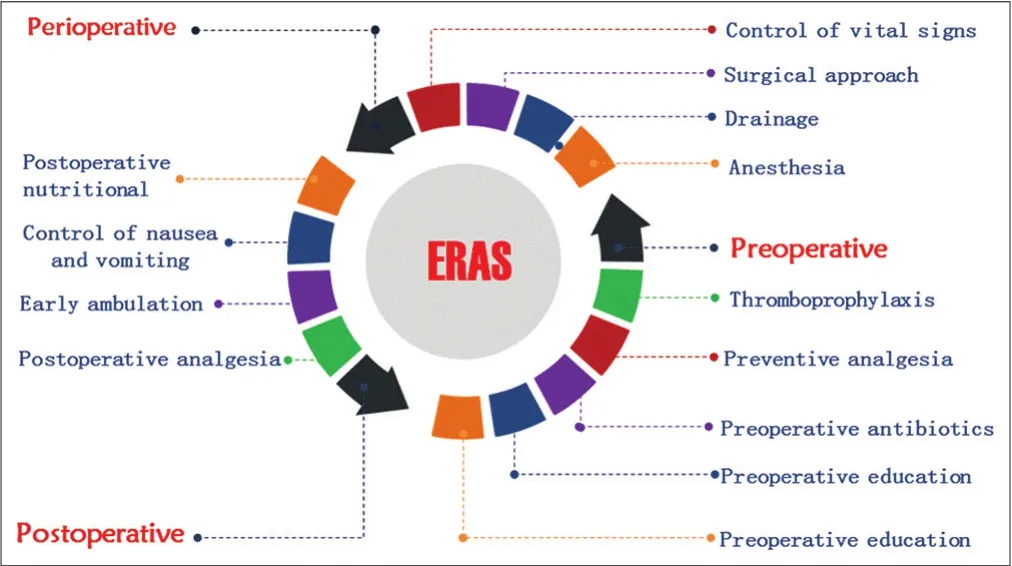
Figure 1:Enhanced recovery after surgery is a multimodal, multidisciplinary approach to the care of the surgical patients
The key components of ERAS are multimodal approaches that lead to a major reduction in the undesirable sequelae from surgery and accelerate recovery following surgery.These new protocols require the multimodal intervention implementation and participation of all care-team members,including anesthetists, surgeons, nurses, and physiotherapists cooperating closely on this to ensure the success of the ERAS program[12][Figure 1].Nursing care is key to having a wider perspective of the entire ERAS approach, which is assessed daily for all patients to plan the nursing resource for the next following 24 h.[13]The growing demand for major spinal surgery in high-risk patients carries with the need for nurses responsible for interring professional communication,preoperative education, attenuation of the surgical stress response, clarification of doubts and abolishment of erroneous beliefs, early mobilization, and optimized nutrition where appropriate.[14]
METHODS
All the subject-related documents published were systematically searched from four databases:Springer Link,PubMed, Embase, and Wanfang data in October 2020.
After reading a number of documents, we use the following search string:“role of nursing” or “enhanced recovery after surgery” or “enhanced recovery after surgery (ERAS) and spine surgery” or “enhanced recovery after surgery (ERAS)nursing” or “enhanced recovery after surgery (ERAS) of spinal operation” or “enhanced recovery after surgery (ERAS)” and“spine surgical nursing.” We searched for studies of any types of publications but limited to original articles in English.We also screened the reference lists of included papers, relevant systematic reviews or published clinical trials.
We included all the studies reporting data onto the role of nursing in ERAS programs in spine surgery.Data from included articles were extracted independently by two researchers using a standardized form, and any discrepancies were resolved by consensus.Eligible studies included the role of nursing in ERAS (e.g., nursing intervention, holistic nursing, and individuation nursing care) and ERAS protocols in spinal operation (e.g., reduced length of stay, reduced postoperative hospital stay, and increased satisfaction).These data have to report at least one of the above criteria to be included in this review.The exclusion criteria were:Repeat studies, overlapping cases, and studies that did not meet the above criteria.We used Endnote to retrieve to select articles.The concordance rate of the two reviewers was 96.8%.After screening all titles and removal of duplicates, a total of 9 studies fulfilled the eligibility criteria and were included in the review [Figure 2].
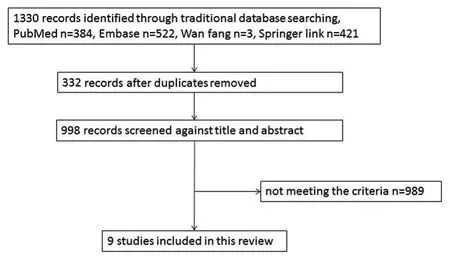
Figure 2:Search and selection of eligible studies
RESULTS AND DISCUSSION
Nursing role in major spinal surgery
The nurse’s role within ERAS programs is visibly as part of the multidisciplinary team, and ERAS nursing can comply with ERAS processes, effectively promote the postoperative recovery for spine surgical patients [Figure 3].[15]
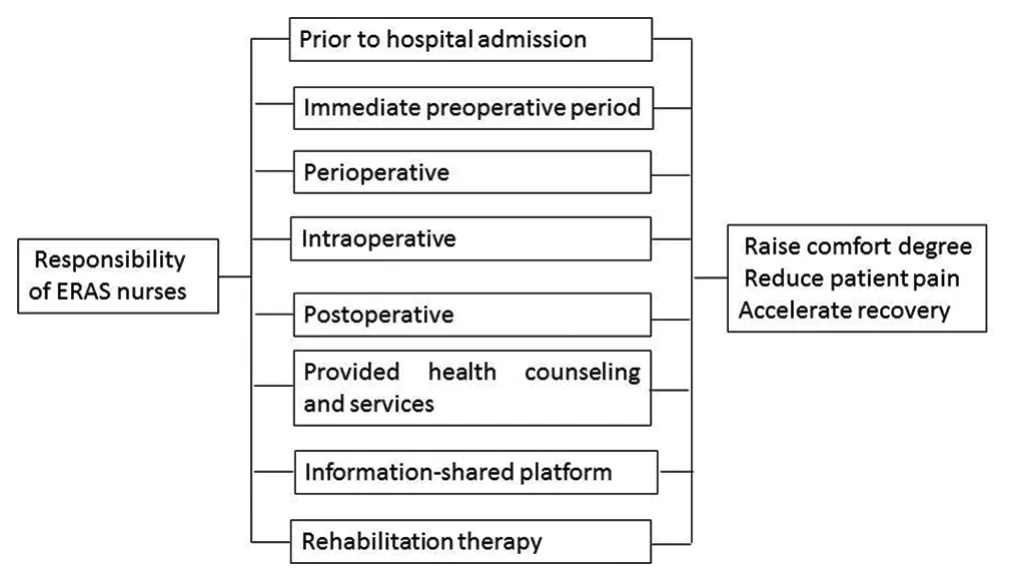
Figure 3:Enhanced recovery after surgery nursing follows enhanced recovery after surgery processes and effectively promotes the postoperative recovery for spine surgical patients
To ensure a smooth flow of medical processes of outpatient toward inpatient department
Spinal trauma is a common spine surgeon condition which is serious injuries, critical illness, with the high mortality and rate of deformity, it’s important to chosen a prompt and proper treatment strategy for the patients.[16]The nurse takes on the tasks of protecting against complications and preventing secondary injury of the spinal cord.[17]This may be noticeable for established readiness centers, and allow nurse participation, the intention of outpatient/inpatient department into one integral whole, which is corresponding to the completion of preoperative preparation of ERAS approach.[18]These programs include:preoperative regular examinations,preoperative health education, and preoperative nutrition preparation.[19]Often, this can also help shorten the wait times at a hospital, stabilize patient’s emotion, and reduce their stress reaction/anxiety, which is advantageous to maintain body nutrition, to reduce postoperative complication, so as to help them get through the operative period more smoothly.[20]
Accomplishment of enhanced recovery after surgery approach requiring coordination of multidisciplinary team members
Patients presenting with spinal trauma may have any combination of traumatic brain injury, hepatic or splenic injuries,limb fractures, pressure ulcers, diabetes, hypertension, and heart disease.[21]Therefore, multidisciplinary treatment (MDT)was especially important for patients who had spine surgery with comorbid disorders, especially with diagnostic ambiguity,which can help explore the best treatment method to patients.[22,23]During the MDT period, the nurses carry out actions such as:responsible for organization of meetings,arrangement of the department, rehabilitation nursing and mental nursing, and making individualization nursing plan.[24-26]In addition, there is evidence that ERAS protocols are most effective when they use an MDT strategy, in improving the efficiency, accuracy and security of the spinal operation,reducing the length of stay, and increasing satisfaction.[27]
Whole-process nursing intervention, holistic nursing, and individualization nursing care are supposed to provide
There is plenty of evidence proved that spinal surgery had these characteristics in patients:big surgical trauma, long hospital stay, high hospitalization costs, and high risk of complications.Recently, more and more evidences suggest that introducing ERAS principles to spine surgery pathways can improve surgical outcomes.[28,29]Furthermore, there is strong evidence that nursing acquires an essential role in the application of ERAS components to major spinal surgery[30-32][Table 1].
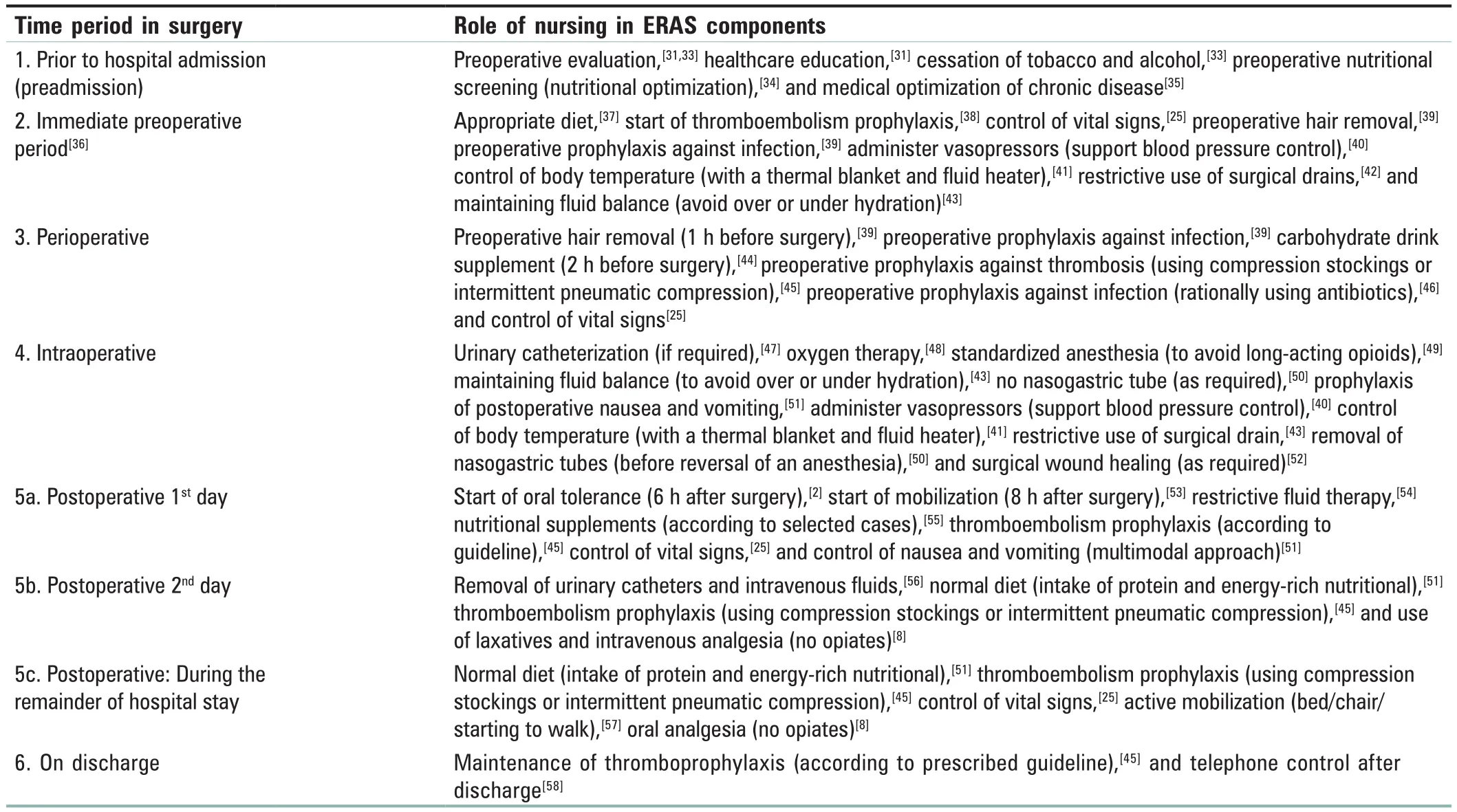
Table 1:The role of nursing in enhanced recovery after surgery programs in accordance with surgical periods
Implementation of the hospital-community integrated nursing techniques
Recent studies found that while the application of ERAS modeled on major spine surgery can reduce the hospitalization day, but in some cases also can lead to higher hospital readmission rates and other costly interventions.[8,31,59]Therefore, successful implementation of the ERAS pathway in major spine surgery requires the collaboration of all members of the surgical team, and rehabilitation treatment and nursing is far more significant after discharge.[60]ERAS program focused on reducing the stress response, nevertheless, the key points are how to deal with lifting the patient’s worries and actively cooperate with treatment.Therefore, it is important to establish convenient clinic in community hospitals for patients after undergoing major spine surgery with ERAS pathways.A rehabilitation treatment team of nurses and physiatricians is the key part of the convenient clinic, and their chief responsibility is to implement early rehabilitative treatment, involving wound care, phlebitis care, emotional support, muscle soreness,and fatigue care.[61]
Furthermore, a continuous medical service should be offered to the outpatient trying to provide individualized services for patients and improve patient satisfaction.
Nurses involvement in creating the multidisciplinary information sharing platform
It is very important to create an information-shared platform,which will provide a common information platform for treatment for the ERAS pathway.[12]The platform is to provide patient’s concrete conditions for doctors to plan in time appropriate treatment program, by active treatment, and alleviate the symptoms quickly.All these activities are aimed at making patients quite satisfied with treatment.
Clinical nurses in charge of recording data onto per patient will do more to provide convenience for surgeon who can get started early to make decisions on scheduled operation,in accordance with personal situation, physiological and biochemical indices, and mental health situation.There’s a lot of evidence that introducing data-base management for information technology to assist nurses to deal with numbers of cases and remote consultations can save a lot of time for multidisciplinary team project implementation.[62]Otherwise,information sharing platforms can further provide health counseling and services for the discharged patients, to achieve the maximum utilization of the medical resources, improve patient safety and patient satisfaction.
CONCLUSION
The ERAS pathways focus on combining and coordinating the types of health resources, dedicated to providing our patients with quality and efficient nursing services, which develops with the goal of promoting the recovery of the patients, reducing in-hospital days and preventing subsequent complications.Evidence shows that ERAS pathways to procedures can improve surgical outcomes, and has obvious treatment effects on the recovery process.[63]Moreover, there is strong evidence to support the wide adoption of ERAS pathways in spinal surgery.[8]Obviously, the nursing staff is crucial to the success of an ERAS program, although the patients’ clinical effectiveness depends on many factors, the patients were discharged on time, based on the program principles.
With the development of surgical care, nursing staff and multidisciplinary teams should work together, which is as the basic connotation and requirement of the ERAS program should be.Accordingly, during the execution of ERAS pathways,the nursing staff should focus on dynamic clinical observation and evaluation of patients’ condition as the main content of the recovery process.Furthermore, nursing staff needs to communicate with surgeons, and provide patients’ concrete condition for doctors to plan appropriate treatment program,so as to alleviate the symptoms quickly, raise patients’ comfort degree, reduce patient pain and accelerate recovery.
The nursing staff should possess care ability to take specific interventions in preoperative, intraoperative, and postoperative period, then make the multidisciplinary team function well and increase the patients’ satisfaction.This is the reason that nursing staff held the important position in ERAS protocols.However, with the progress development of ERAS protocols, nursing staff is also facing new challenges and difficulties.A strong and supportive environment is needed for their development, and more high quality research is necessary to confirm this protocol.
Financial support and sponsorship
This research was sponsored by the scientific research and technology development plan of Nanning (20193100,Z20191065, Z20190446), and Nanning Excellent Young Scientist Program RC20200102.
Conflicts of interest
There are no conflicts of interest.
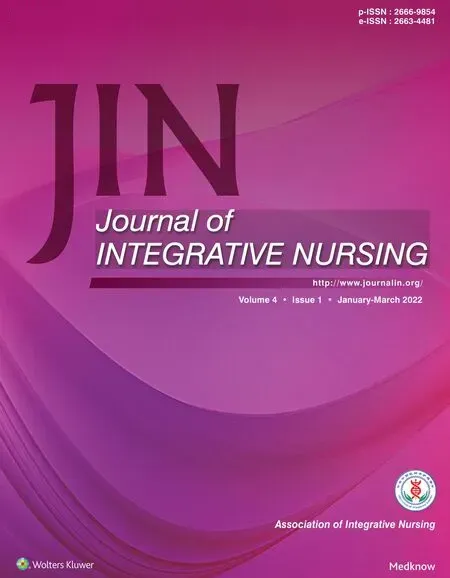 Journal of Integrative Nursing2022年1期
Journal of Integrative Nursing2022年1期
- Journal of Integrative Nursing的其它文章
- ln-vial exhaust method versus conventional exhaust for injection of COVlD-19 vaccine:Correspondence
- Research progress in core body temperature measurement during target temperature management
- Knowledge, attitude, and practice of techniques of breastfeeding among new mothers:A survey across Delhi Region
- Nursing perspective of the expert consensus on diagnosis and treatment of integrated Chinese and Western medicine in lung cancer
- Smartphone dependency and its impact on academics among medical and nursing students:A cross-sectional study
- Bibliometrics and visual analysis for clinical research on intervention of traditional Chinese medicine nursing technology on rheumatoid arthritis
